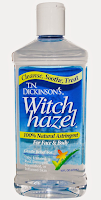Chloasma is a condition also called the mask of pregnancy, hyperpigmentation or melasma. In essence, the pigment (melanin) in your skin has gone out of control. This results in dark spots of pigmentation on the face, resembling in some cases a mask—thus the name. These are not freckles or dots, but sometimes large patches of dark brown skin commonly found on the cheeks and/or the forehead, although it is not limited to these areas.
During pregnancy or while on birth control pills (“the pill” makes your body think it’s pregnant), your skin becomes photosensitive or sensitive to the sun. Photosensitivity is most common in women, especially during the childbearing years, due to fluctuating hormones. Unfortunately, if you’re prone to it, the only solution for keeping chloasma away is to stay out of the sun.
ANY amount of sun exposure will darken the pigmentation on your face. All exposure counts, and as little as a few minutes of sun can darken the spots. If you’ve ever experienced hyperpigmentation, you know this is true. Simple, incidental sun can create new spots or darken existing brown splotches on your face that may take a long time to go away. Also note that you don’t have to be pregnant or on birth control pills to develop chloasma. Once you are off the pill or have given birth, you won’t automatically be resistant to hyperpigmentation. You are just more susceptible during periods of hormonal fluctuations, but not only during these times.
ANY amount of sun exposure will darken the pigmentation on your face. All exposure counts, and as little as a few minutes of sun can darken the spots. If you’ve ever experienced hyperpigmentation, you know this is true. Simple, incidental sun can create new spots or darken existing brown splotches on your face that may take a long time to go away. Also note that you don’t have to be pregnant or on birth control pills to develop chloasma. Once you are off the pill or have given birth, you won’t automatically be resistant to hyperpigmentation. You are just more susceptible during periods of hormonal fluctuations, but not only during these times.
Wearing sunscreen is imperative if you are experiencing any hyperpigmentation. You may want to wear sunscreen throughout your pregnancy even if you don’t seem prone to pigmentation problems. Sunscreen is essential for all skins to help combat the ill effects of sun exposure. Sunscreen alone, however, will not keep hyperpigmentation away.
I tell my clients that if I had to choose between wearing sunscreen on my face without wearing a hat or wearing a hat without sunscreen, I would always—no exceptions—wear the hat without sunscreen. Why? Because it is the direct sunlight that causes damage, and in this discussion, chloasma. Although you may be wearing a sunscreen, it is only screening out or filtering the harmful UV rays. You want to obstruct the sun, not just filter it out. When it comes to being photosensitive, you really want to avoid direct sunlight on your face. Realistically, I wear sunscreen and a hat when I’m going to be out (and so should you).
Even with all the protective measures you may take, hyperpigmentation can still find a way to get to you. However, after you have given birth your hormones will usually calm down, and your skin won’t be so sun sensitive. Any chloasma you may have accumulated during the pregnancy might just fade away and be gone forever. Although sometimes once you are photosensitive, you may continue to remain sensitive to the sun.
Even with all the protective measures you may take, hyperpigmentation can still find a way to get to you. However, after you have given birth your hormones will usually calm down, and your skin won’t be so sun sensitive. Any chloasma you may have accumulated during the pregnancy might just fade away and be gone forever. Although sometimes once you are photosensitive, you may continue to remain sensitive to the sun.
In the winter, chloasma will be less likely to develop. The sun is farther away from the earth, and the air is colder so you won’t be outside as much. This doesn’t mean chloasma won’t announce itself, but it usually won’t become as dark as in the summer time. It is in the warmer months that you really want to be careful in the sun. You will accumulate a lot more incidental sun (to and from the car, working in the garden, talking to the neighbors in the yard) without even knowing it. Any amount of exposure can darken your pigmentation; so be careful.
Even if your chloasma becomes dark in the summer, it will usually fade in the winter because you’ll have less outdoor activity. Just remember, chloasma won’t develop or worsen unless sun exposure is involved.
For more information, see:
Even if your chloasma becomes dark in the summer, it will usually fade in the winter because you’ll have less outdoor activity. Just remember, chloasma won’t develop or worsen unless sun exposure is involved.
For more information, see:
- Hyperpigmentation: A reader’s question(s)
- What is Post-Inflammatory Hyperpigmentation?
- A Small Sunscreen Lecture

















































